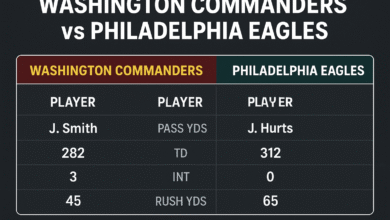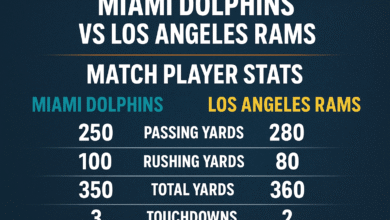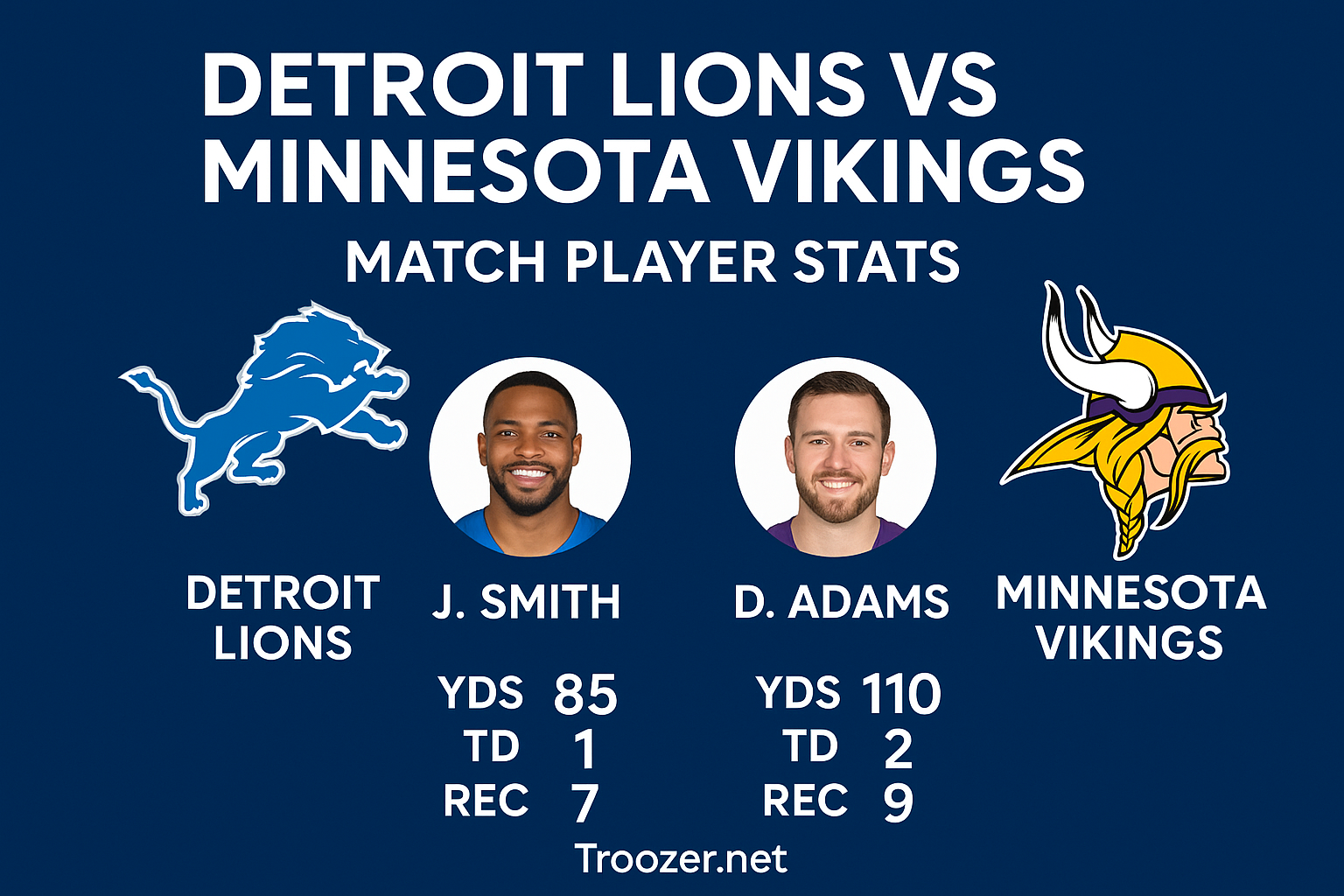Chicago Bears vs Houston Texans Match Player Stats

The NFL thrives on high-octane battles where teams bring their grit, strategy, and talent onto the field. One such matchup that grabbed fans’ attention was the Chicago Bears vs Houston Texans game. Beyond the final scoreline, what truly paints the picture of this clash are the match player stats, highlighting who excelled, who struggled, and how the individual efforts shaped the outcome. From quarterbacks to defensive units, every performance tells a story worth unpacking.
Setting the Stage
The Chicago Bears and Houston Texans may not share a historic rivalry, but games between them always come with unpredictability. Both franchises have been in phases of rebuilding and restructuring, with fresh talent, developing quarterbacks, and emerging defensive stars. This particular matchup was less about legacy and more about proving ground—showing which players could stand tall under pressure and set the tone for the rest of the season.
The Bears entered the game with a focus on balancing their run-heavy offense with better passing execution, while the Texans looked to showcase improvements in both their young quarterback play and defensive resilience. The result was a hard-fought contest, with statistics shining a light on the key battles within the game.
Quarterback Duel: Passing Efficiency vs Pocket Pressure
One of the most closely watched aspects of the Chicago Bears vs Houston Texans match player stats was the quarterback duel. The Bears’ signal caller displayed flashes of mobility and short passing accuracy, though consistency remained an issue. Completing a modest number of passes, his total yardage didn’t overwhelm the Texans’ defense, but key third-down conversions kept drives alive.
On the Texans’ side, their quarterback showed composure, using quick throws to neutralize the Bears’ pass rush. His completion percentage stood notably higher, and he spread the ball to multiple receivers, making the Bears’ secondary work overtime. A touchdown pass in the red zone highlighted his ability to stay calm and execute under pressure. However, an interception thrown in the second half reminded fans that young quarterbacks are still prone to costly mistakes.
Running Backs: Ground Game Dynamics
If there was a constant theme in the Bears’ offensive strategy, it was their reliance on the run. Their leading running back tallied impressive rushing yards, consistently breaking through the Texans’ defensive line and moving the chains. His longest run of the day showcased his vision and burst, creating a highlight that energized the Bears’ sideline.
The Texans, however, countered with a more committee-based approach. While their starting running back managed a few strong carries, the lack of consistent blocking up front limited explosive gains. Their yards-per-carry average lagged behind Chicago’s, illustrating the Bears’ slight edge in the ground game.
Wide Receivers and Tight Ends: Key Playmakers
In today’s NFL, no game story is complete without mentioning the pass-catchers. For the Bears, their top wide receiver showed his value by hauling in critical catches despite tight coverage. His ability to stretch the field opened up lanes for shorter passes and runs. The Bears’ tight end also made his mark, particularly on third downs, acting as a reliable target in the middle of the field.
The Texans’ receivers, however, arguably had the more impactful day. Their top target not only recorded more receptions but also converted them into higher yardage. With crisp route running and yards after the catch, he turned routine plays into chain-moving drives. Another wideout contributed with a touchdown reception, capitalizing on the Bears’ occasional coverage lapses.
Defensive Standouts: Tackles, Sacks, and Turnovers
Defense often decides tight NFL games, and the Chicago Bears vs Houston Texans match player stats underline that perfectly. The Bears’ defense showcased dominance in moments, with their linebackers registering double-digit tackles. A sack-fumble in the second quarter provided momentum, though missed assignments later allowed Houston to capitalize.
On the Texans’ side, their defense played with energy, recording crucial pass deflections and a timely interception. Their defensive line also earned praise, as a pair of sacks disrupted the Bears’ offensive rhythm. A safety late in the game highlighted their resilience and ability to strike back when pinned deep.
Special Teams Impact
While often overlooked, special teams had their role in shaping this game. The Bears’ kicker remained reliable, converting field goals under pressure and adding important points to their tally. Meanwhile, their punter consistently pinned the Texans deep, giving the defense favorable field position.
The Texans had mixed results on special teams. Their return game showed sparks of explosiveness, with a near-breakout run in the third quarter. However, a missed field goal attempt cost them valuable points in what was a closely contested match.
The Statistical Picture
Looking at the numbers collectively:
-
Passing Yards: Texans had the edge with more completions and a higher percentage.
-
Rushing Yards: Bears led with their dominant ground game and better per-carry average.
-
Turnovers: Both teams had giveaways, but the Texans’ interception proved more costly.
-
Third-Down Conversions: Bears were more efficient, keeping drives alive longer.
-
Sacks: Texans’ defensive front outperformed in pressuring the quarterback.
Read More: Detroit Lions vs Minnesota Vikings Match Player Stats
Conclusion
The Chicago Bears vs Houston Texans match player stats reveal that this was not a one-sided affair but rather a clash defined by fine margins. The Bears leaned on their rushing attack and third-down efficiency, while the Texans relied on accurate passing and defensive plays. In the end, individual performances—from receivers making clutch catches to linebackers anchoring the defense—were the true highlights.
This matchup underscores how stats tell more than just numbers—they narrate the resilience, strategy, and talent each team brings to the field. For fans and analysts alike, reviewing these performances helps understand not just who won the game, but why it unfolded the way it did.



